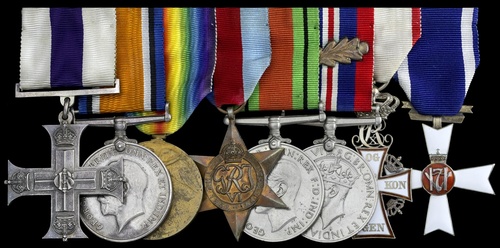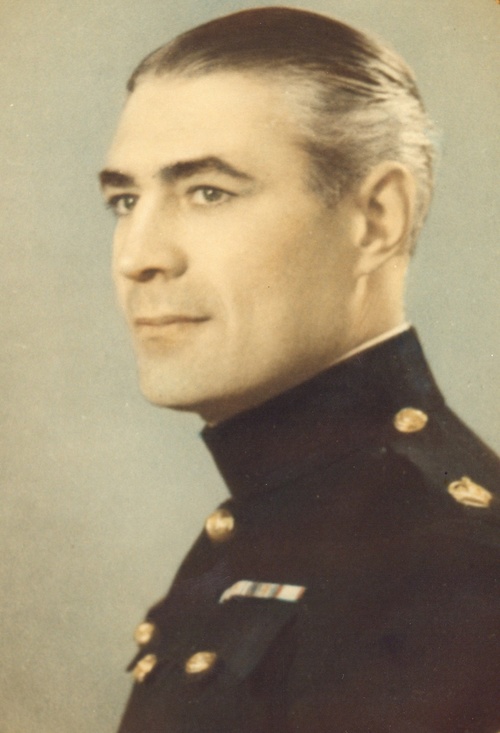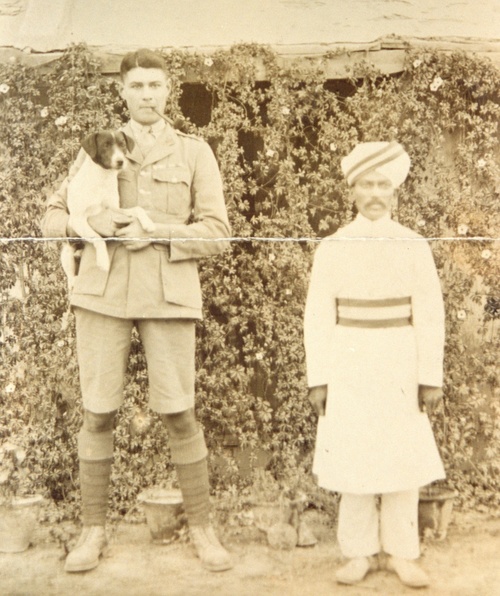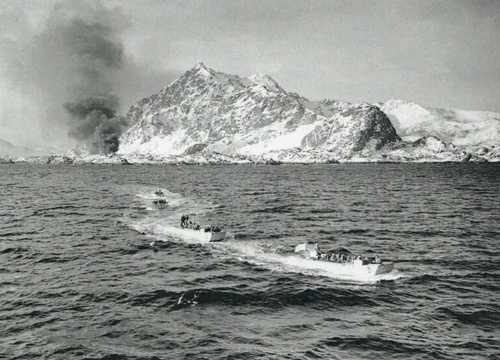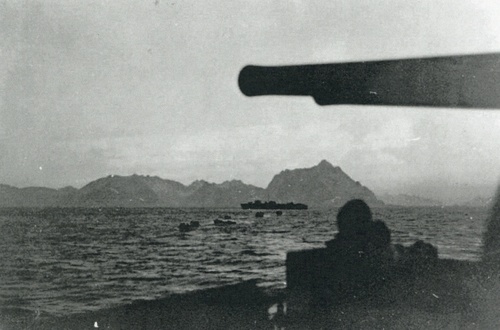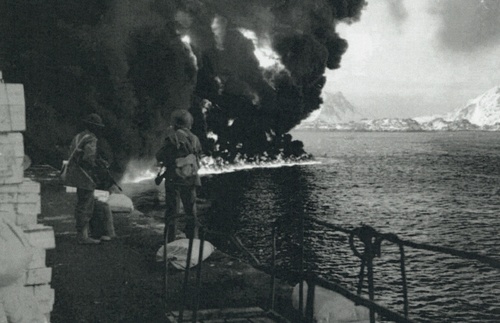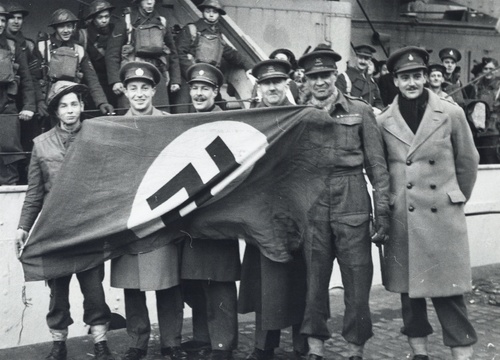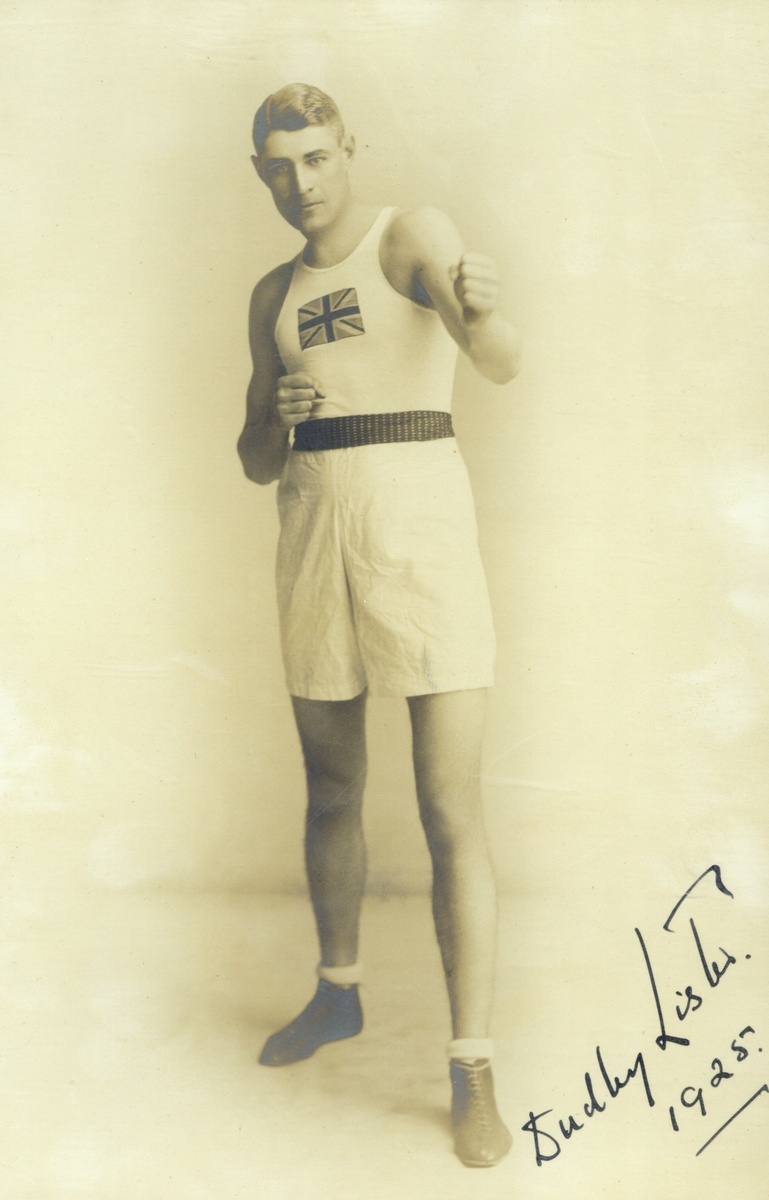Auction: 19002 - Orders, Decorations and Medals
Lot: 377
'It had been very cold all day and it took us several minutes to thaw out. But at 2p.m. our flotilla was under way for Scapa Flow. Heading away from Norway after a successful operation with the ship throbbing its heart out at twenty-four knots is a great feeling, especially with a couple of gins and a good lunch inside you.
I knew that the raid could hardly have been more successful. We had destroyed eighteen factories; had sunk twenty thousand tons of shipping in harbour; had sent nearly a million gallons of oil and petrol up in smoke. Throughout the Lofotens we had taken prisoner 216 Germans and sixty quislings. We had seized maps, code systems, valuable documents. We had carried off three hundred loyal Norwegians who volunteered to continue their country’s fight from Britain'
Commando, Brigadier John Durnford-Slater, refers
A rare Great War M.C. group of eight awarded to Lieutenant-Colonel D. S. Lister, The Buffs, who went on to command No. 4 Commando in the Lofoten raid - Operation 'Claymore': ‘A fine swashbuckling type of soldier, a regular Bulldog Drummond’, between the wars he excelled as a heavyweight boxer, becoming Amateur Champion and representing Great Britain in the Golden Gloves contest in Madison Square Gardens, New York
Military Cross, G.V.R., the reverse privately inscribed, ‘2/Lieut. D. S. Lister, 1st Bn. The Buffs, Dickebusch, August 2nd 1918’; British War and Victory Medals (2. Lieut. D. S. Lister); 1939-45 Star; Defence and War Medals 1939-45, with M.I.D. oak leaf; Denmark, Kingdom, Order of the Dannebrog, C.X.R. (1912-47), Knight’s breast Badge, silver, silver-gilt and enamel; Norway, Kingdom, King Haakon VII’s Liberty Cross 1945, silver-gilt and enamel, mounted as worn, very fine (8)
M.C. London Gazette 15 October 1918:
‘For conspicuous gallantry when leading his platoon in a raid. He succeeded by his example and daring in enabling his men, though harassed by machine-gun fire, to reach their objective. He shot a sentry and personally secured several prisoners. He did splendid work.’
M.I.D. London Gazette 27 May 1941. The original joint recommendation for the Lofoten raid states:
‘All four officers carried out their tasks with admirable precision, punctuality and skill, and all kept me in the closest touch with the progress of the operations for which they were responsible. It is very clear from the results obtained that their officers and men worked very well and rapidly under their command. The tasks given to these officers called for considerable tact and quick thinking and the fact that they were carried through within the time allotted and without unpleasant incidents of any sort, shows the officers in question possessed these qualities in addition to military skill and the power of command.’
Norwegian Liberty Cross London Gazette 25 March 1949.
Dudley Stuart Lister was born in April 1899 at Herne Hill, London. Commissioned in the Buffs as a 2nd Lieutenant direct from the Royal Military College, Sandhurst in December 1917 he joined the 1st Battalion in the Ypres salient in May 1918, where ‘he soon showed outstanding quality as a leader of men and, in August, was awarded the Military Cross’, as per the above related deeds.
Remaining a regular soldier between the wars, Lister was advanced to Lieutenant in June 1919 and to Captain in January 1932, the latter promotion taking place on his return from attachment to the Royal West African Field Force 1929-32. He had, meanwhile, in January 1926, while serving in the 2nd Battalion, The Buffs, been awarded the Knight’s insignia of the Danish Order of Dannebrog, and added to his impressive tally of boxing titles - in 1925 alone he became the Army Officers’, Imperial Service Officers’, Imperial Service All Ranks’ and British Amateur Heavyweight Champion. Not surprisingly, therefore, he was employed at the Army School of Physical Training between 1934 and the renewal of hostilities, gaining further advancement to Major in August 1938.
Soon after the outbreak of hostilities Lister was appointed a Company Commander in No. 7 Commando, but in due course was given command of No. 4 Commando in the rank of Lieutenant-Colonel. A glimpse of him at this time may be found in James Dunning’s excellent history, The Fighting Fourth, No. 4 Commando at War 1940-45:
‘Tall, well built and rugged-looking, he was an imposing figure on parade. He was a fitness fanatic, and he based his own fitness - and ours - mainly on the pre-war boxing regime of ‘road work’. So naturally, we had plenty of both speed and endurance marches which, to his credit, he led from the front. Typically, he ended one of his C.O’s talks, in which he had been emphasising the necessity for the highest standards of physical fitness, with this rejoinder, “And what’s more, you can’t even make decent love, either, unless you are really physically fit!”
However, he suffered from ‘weak legs’ when it came to cross-country marches or hill walking, when the softer underfoot conditions took their toll on him. This wasn’t his only weakness, and I quote Lord Lovat, who wrote, ‘Dudley Lister suffered wife trouble (the old story) with a girl in every port ... ’. This extravagance - despite his own wife being 20 years his junior - prompted him to try and save money, so instead of living in a hotel or billet, when we were in Troon, Lister decided to rough it and live cheaply, thereby netting his subsistence allowance, by pitching a tent on the seaward side of the famous Troon golf course. Therein, with the aid of his trusty and capable batman, ‘kipping’ in a sleeping bag on a camp bed, feeding on meals cooked on a primus stove and reading and writing by the light of a hurricane lamp, Lister survived the winter of 1941-42.’
Meanwhile, in early 1940, on the recommendation of Churchill, Admiral Sir Roger Keyes had summoned Lister to a top secret meeting at his H.Q. to discuss a raid on the Lofoten Islands, an operation codenamed “Claymore” - both No. 3 and 4 Commandos were chosen for the assault, the former under Colonel Durnford-Slater. And so it was, a few weeks later, that Lister and his Commandos (some 250 men) were embarked in the (L.S.I.) Queen Emma, arriving off the Lofotens on 4 March, the Colonel having set himself “Task 1” - to secure a bridgehead at Svolvaer and to seal off the area with road blocks. As it transpired, Lister and his party achieved these aims within an hour of landing, in addition to gathering intelligence documents and rounding-up assorted Quislings - he established his H.Q. in the Harbour Master’s office (who was believed to be a collaborator) and gained instant popularity by distributing the latter’s wine cellar among the locals. In fact, the raid was a great success, the combined attacking force destroying 18 cod-liver oil factories (capable of producing nitro-glycerine) and taking around 215 prisoners, in addition to embarking over 300 Norwegians.
Lister remained employed as C.O. of No 4 until early 1942, when he took over command of No. 10 (Inter Allied) Commando, which comprised assorted volunteers from the occupied countries, including Belgians, Dutchmen, Free French and Norwegians. That August, some of Lister’s men went into action for the first time, in the Dieppe raid, and under his hard training agenda new recruits were prepared for the Normandy landings. But the Commando was not solely employed in regular operations, his period of command witnessing his men contributing to small-scale raids on Norway and S.O.E.-type operations in Yugoslavia and Czechoslovakia. Lister was awarded the Norwegian Liberty Cross.
Placed on the Retired List in September 1946, he became the Sporting Editor of a well-known London paper and an official of the Greyhound Racing Association, besides providing the B.B.C with commentary for the 1948 Olympics.
‘A fine swashbuckling type of soldier, a regular Bulldog Drummond’, the Colonel died at Hurlingham Court, Fulham in September 1965; sold with an original photograph of the recipient as a boxer, signed and dated 1925, framed and glazed, together with a signed copy of his book, How To Box (London, 1952), and a file of research, including a quantity of copied photographs, among them Lister and his Commandos holding a captured Nazi flag.
Subject to 20% VAT on Buyer’s Premium. For more information please view Terms and Conditions for Buyers.
Sold for
£7,000
Starting price
£3800

